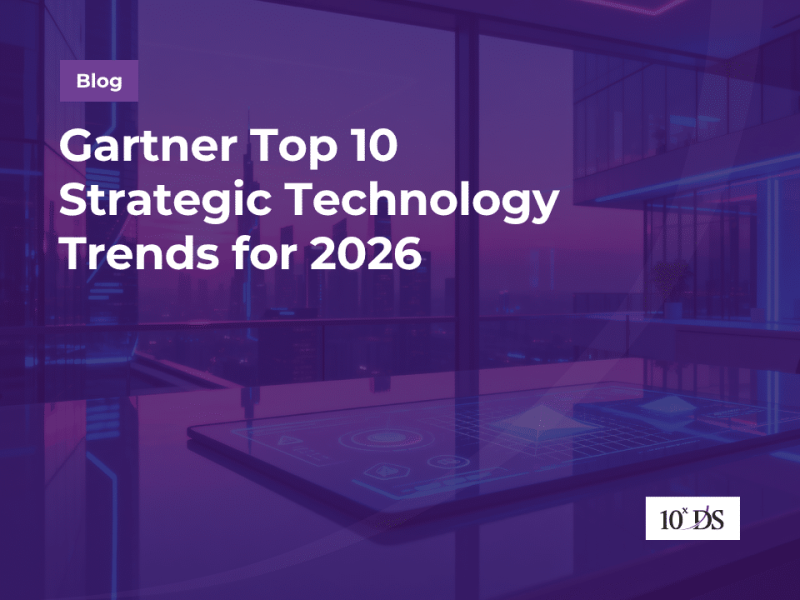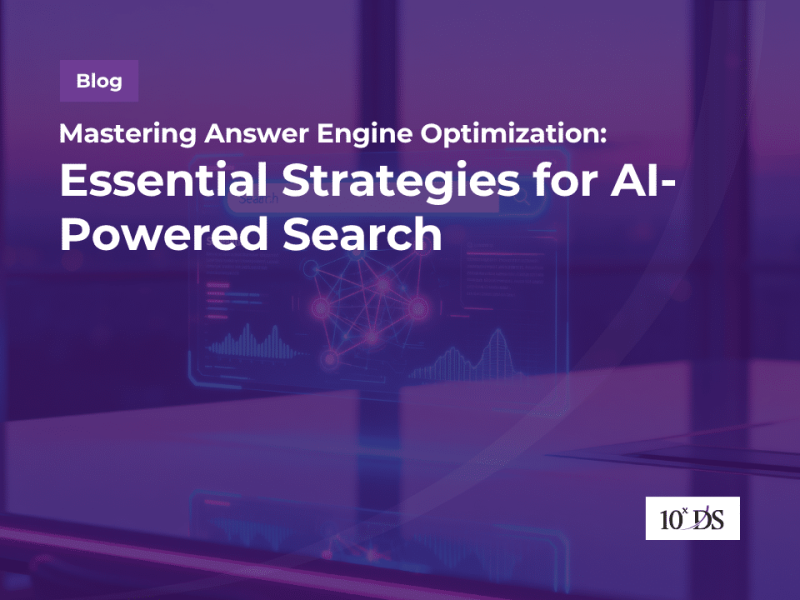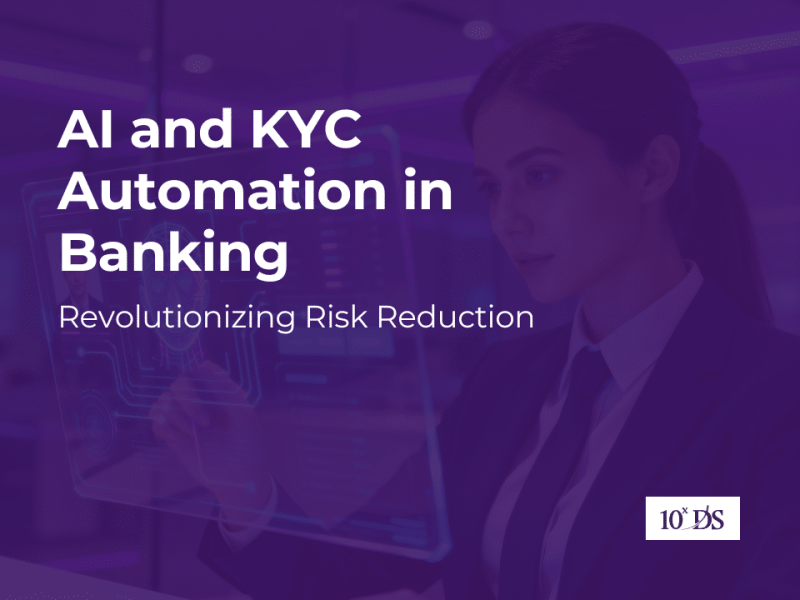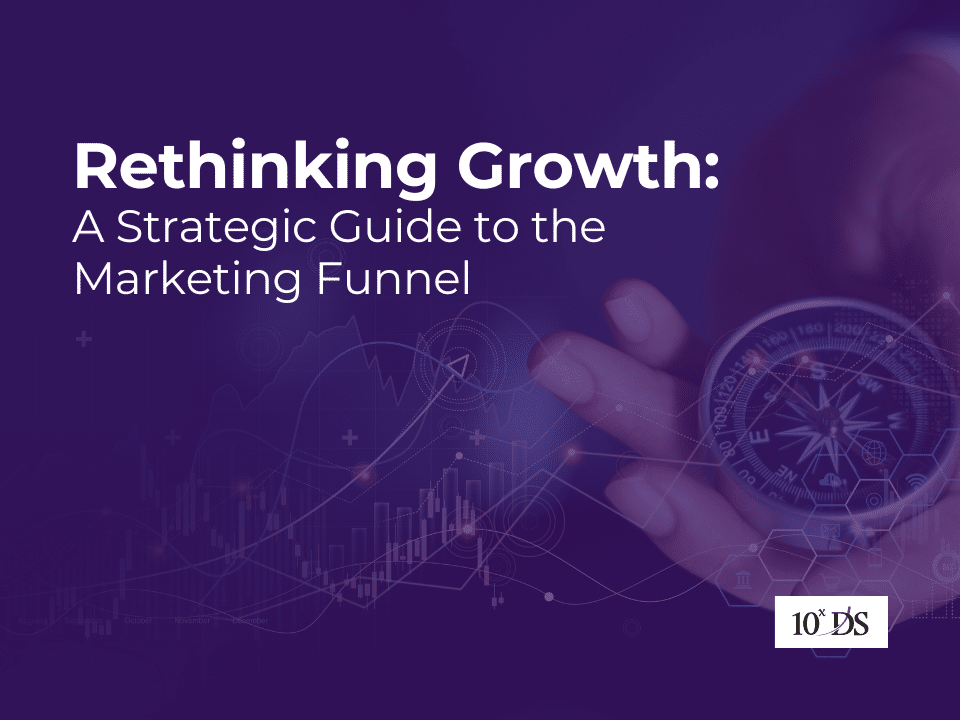
Rethinking Growth: A Strategic Guide to the Marketing Funnel
In a world where attention spans are short and competition is fierce, having a structured approach to guide potential customers from discovery to decision is no longer optional—it’s essential. That’s where the marketing funnel comes in. More than just a visual model, it’s a strategic tool that enables marketers to map, influence, and optimize every stage of the buyer journey with purpose and precision.
This guide breaks down the marketing funnel into its core stages, explores how to optimize and automate it effectively, and highlights the measurable impact it can have on modern marketing efforts.
What Is the Marketing Funnel?
The marketing funnel is a strategic model that represents the journey a potential customer takes before making a purchase. It’s shaped like a funnel because, at the top, you start with a broad audience, and as you move down, fewer people progress through to interest, consideration, and ultimately, conversion and loyalty.
Each stage of the funnel represents a level of customer engagement, and marketing efforts are tailored accordingly. By understanding where a prospect is within the funnel, you can serve the right message at the right time.
Why the Funnel Model Matters
The funnel isn’t just about guiding people to buy—it’s about creating a better customer experience, improving conversion rates, and maximizing lifetime customer value.
- Focuses Your Strategy: A well-defined funnel allows for clear segmentation of your audience, enabling you to align content, messaging, and marketing channels to each specific stage of the buyer’s journey. This focused approach ensures your strategy is purposeful, targeted, and efficient.
- Improves ROI: Funnel optimization ensures you’re investing your budget wisely reaching the right people at the right time. By identifying where prospects are in their journey, you can avoid wasting resources on audiences who are not yet ready to convert.
- Enables Personalization: The funnel provides insights into user behavior and intent, empowering you to deliver highly relevant, personalized experiences. This increases engagement and builds trust, ultimately leading to higher conversion rates and stronger customer relationships.
- Scales Automation: With a structured funnel in place, marketing automation tools can be used more effectively. From nurturing leads to re-engaging past customers, automated campaigns can run seamlessly and at scale—without losing the human touch.
Stages of the Marketing Funnel
While the traditional funnel is typically divided into three core stages—Top, Middle, and Bottom—modern marketing has evolved to recognize that the customer journey doesn’t end at the point of purchase. Today’s most effective models extend beyond conversion to include critical post-purchase stages such as loyalty and advocacy. By doing so, marketers can nurture long-term relationships, encourage repeat business, and turn satisfied customers into brand champions—creating a cycle of sustained growth and engagement.
Let’s break them down:
1. Awareness (Top of Funnel – TOFU)
At the awareness stage, the primary goal is to capture attention and introduce your brand, product, or solution to potential customers. This is where first impressions are formed, making it essential to create engaging and informative content that resonates with a broad audience. Tactics at this stage typically include SEO-optimized blog articles that answer common questions, social media outreach to build visibility, video marketing to tell compelling brand stories, influencer campaigns to tap into trusted voices, and paid advertising aimed at broad interest groups. These strategies help generate brand recognition and attract traffic to the top of your funnel.
2. Interest & Consideration (Middle of Funnel – MOFU)
Once awareness is established, the focus shifts to nurturing leads by building trust and clearly demonstrating the value of your offering. At this stage, potential customers are exploring solutions and evaluating their options, making it crucial to provide content that educates and reassures. Effective tactics include case studies that showcase real-world success, product comparisons that highlight key differentiators, and email nurture campaigns to stay top-of-mind. Webinars, testimonials, and in-depth resources like ebooks and whitepapers help position your brand as an expert in the field. For example, a B2B SaaS company might invite leads to a live webinar titled “How to Automate Your CRM in 5 Steps” after they download a guide on CRM best practices—offering value while subtly guiding them closer to a decision.
3. Conversion (Bottom of Funnel – BOFU)
At the conversion stage, prospects are close to making a decision—your goal is to provide the final push that persuades them to take action, whether it’s making a purchase, booking a demo, or signing up. This is where trust, clarity, and urgency are key. Tactics such as free trials and product demos allow prospects to experience the value firsthand, while discounts, limited-time offers, and personalized sales outreach create motivation to act quickly. Reinforcing confidence with testimonials and social proof can help ease any remaining hesitation. For instance, if a user visits your product comparison page, they might then receive a personalized email offering a discount code and an invite for a free consultation, making it easier for them to commit.
4. Loyalty (post-purchase)
The journey doesn’t end after a purchase—in fact, it’s just the beginning of building a long-term customer relationship. The goal at the loyalty stage is to turn one-time buyers into repeat customers while minimizing churn. This involves reinforcing the value of the purchase and creating meaningful post-sale engagement. Key tactics include onboarding campaigns to ensure customers know how to get the most out of your product or service, loyalty programs that reward repeat behavior, and feedback surveys to show you value their input. Exclusive discounts and customer success follow-ups help maintain connection and satisfaction. For example, an eCommerce brand might send personalized product care tips along with exclusive early access to new collections, encouraging ongoing engagement and future purchases.
5. Advocacy
The final—and often most powerful—stage of the funnel is advocacy, where loyal customers become brand ambassadors. These advocates not only continue to buy from you, but also actively promote your brand to others. The goal here is to leverage customer satisfaction into organic growth through word-of-mouth and referrals. Effective tactics include referral programs that reward customers for bringing in new business, review requests to boost credibility, affiliate partnerships for broader reach, and incentives for user-generated content (UGC) that showcase real-life product use. That’s why, for instance, a SaaS company might invite its happiest customers to join a referral program offering account credits for every successful sign-up—turning customer satisfaction into a growth engine.
Key metrics to track
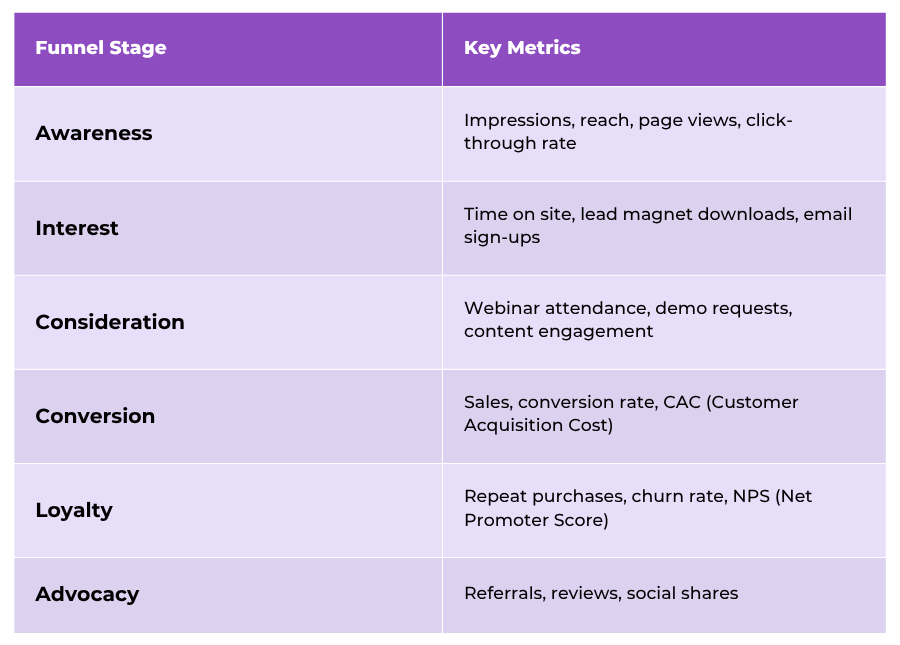
Automating the Marketing Funnel
Automation has transformed the way marketers manage the customer journey. By integrating automation into the marketing funnel, businesses can scale outreach, deliver personalized experiences, and accelerate lead nurturing without overwhelming their teams. Instead of manually managing each interaction, automation tools leverage behavioural triggers—such as clicks, downloads, or time on site—to deliver timely and relevant messages that move leads through the funnel efficiently.
1. Email Automation: Email remains one of the most effective channels for nurturing leads—and with automation, its power multiplies. From a welcome series that introduces new subscribers to your brand, to abandoned cart emails that recover potentially lost sales, automated email flows keep communication consistent and targeted. Lead nurture sequences help educate and build trust over time, while post-purchase onboarding emails ensure new customers feel supported and engaged. Tools like Mailchimp, Active Campaign, HubSpot, and Klaviyo offer robust automation capabilities tailored to businesses of all sizes.
2. CRM Integration: Integrating your Customer Relationship Management (CRM) system with your funnel is critical for tracking and managing leads effectively. With CRM automation, you can track user behavior, score leads based on their engagement and automatically trigger workflows—such as assigning a lead to sales when they hit a certain score or complete a specific action. This ensures no opportunity slips through the cracks. Leading CRM platforms like Salesforce, Zoho CRM, and Pipedrive help bridge the gap between marketing and sales, enabling seamless handoffs and more efficient follow-ups.
3. Retargeting & Ads: Retargeting automation helps keep your brand top-of-mind for prospects who have shown interest but haven’t converted. By using data from site visits or abandoned carts, you can deliver dynamic ads tailored to what each user viewed. Coupled with custom audience segmentation and multi-platform ad orchestration, this approach maximizes ad spend and reinforces messaging across channels. Platforms like Meta Ads Manager (Facebook/Instagram), Google Ads, and LinkedIn Ads are commonly used to automate and refine these efforts for B2C and B2B campaigns alike.
4. Lead Scoring & Qualification: Not all leads are created equal—and automation helps you focus on the ones that matter most. With lead scoring, marketers can assign values based on actions like page views, downloads, or time spent on site. Once a lead reaches a predefined threshold, automation can flag them for sales outreach, ensuring the sales team engages only when prospects are ready. Tools like Marketo, HubSpot, and Pardot offer advanced lead scoring capabilities, helping businesses prioritize efforts and shorten the sales cycle.
5. Multi-Channel Automation: Today’s customers interact with brands across multiple touchpoints, from email and SMS to live chat and web notifications. Multi-channel automation orchestrates these interactions into a cohesive and seamless journey. Whether it’s sending a follow-up SMS after an email click, delivering web push notifications for a flash sale, or using chatbots to answer questions in real time, this approach ensures consistent engagement. Tools like Omni send, Intercom, Twilio, and Drift make it easier to automate across platforms and create unified customer experiences.
Optimizing the Funnel
To improve funnel performance, start by mapping your funnel to align content and channels with each stage of the customer journey. Create intent-driven content that matches user needs whether it’s educational at the top, comparative in the middle, or conversion-focused at the bottom. Leverage retargeting to re-engage users who abandon carts or leave forms incomplete. Consistently A/B test elements like landing pages, calls-to-action, and subject lines to identify what works best. Keep your CRM and analytics data clean and organized to ensure accurate targeting and reporting. Finally, personalize experiences using dynamic content based on user behavior to boost engagement and drive conversions.
Benefits of Using a Marketing Funnel
A well-structured marketing funnel improves lead quality by segmenting users based on behavior, enabling tailored communication. It boosts conversion rates through personalization and automation, while reducing acquisition costs with more efficient targeting. Funnel analytics support data-driven decisions, helping optimize performance, and post-purchase stages enhance long-term customer value through retention and referrals
Challenges and How to Overcome Them
Marketing funnels aren’t without obstacles, but most challenges can be addressed with the right strategies. If leads are getting stuck mid-funnel, use remarketing, personalized follow-ups, and optimized content to re-engage them and move them forward. For low conversion rates, consider A/B testing offers, refining calls-to-action, and ensuring your sales messaging aligns with user expectations. A high manual workload can be reduced by investing in marketing automation platforms that streamline repetitive tasks. Lastly, if your tools are disconnected, integrate your CRM, email, and analytics systems to create a seamless, data-driven workflow that supports the entire funnel.
Conclusion
If your marketing feels fragmented, reactive, or hard to measure it’s likely because you’re missing a clear structure like the marketing funnel. This isn’t just a framework for marketers; it’s a mindset shift. A funnel-driven strategy forces you to think about your audience’s journey with empathy, intent, and precision. It challenges you to stop guessing and start guiding and building every message, channel, and offer around where your customer truly is. In today’s competitive landscape, businesses that adopt this approach aren’t just more efficient, they’re more aligned, more customer-focused, and ultimately, more successful. The real question isn’t if you should build a funnel, it’s how soon you can start.
